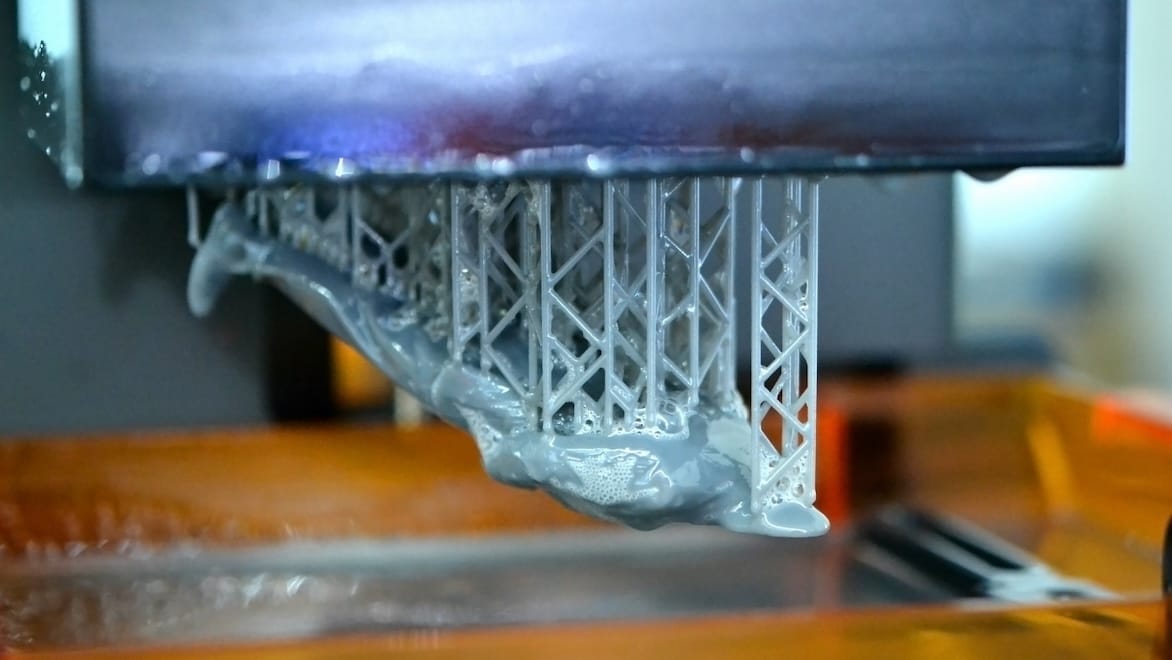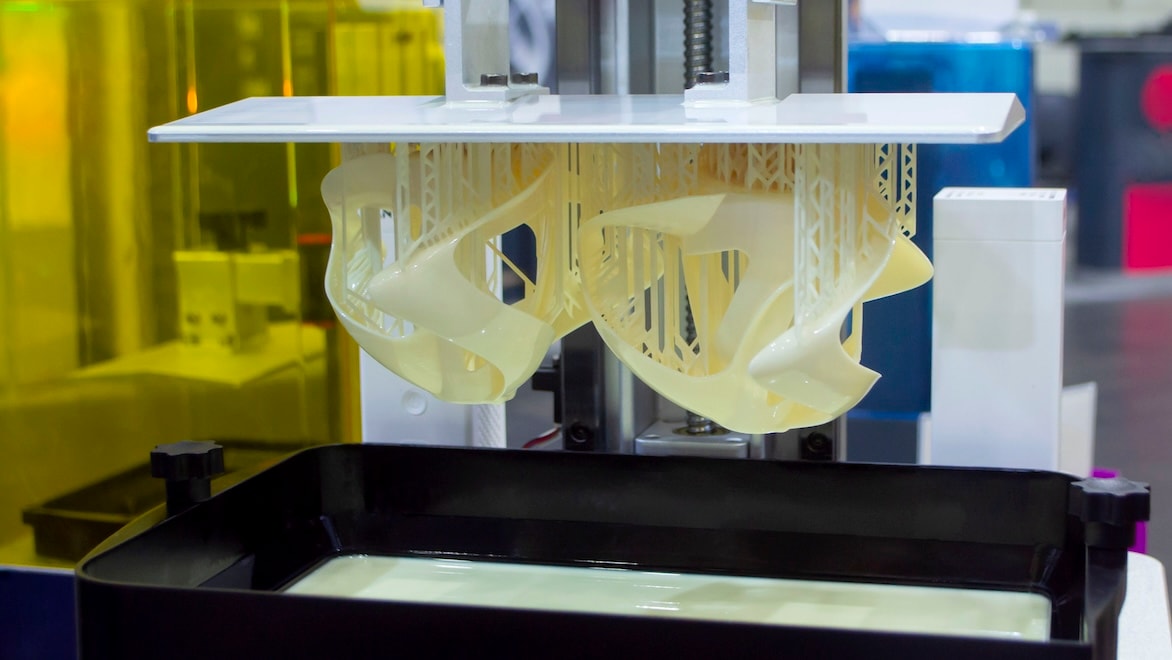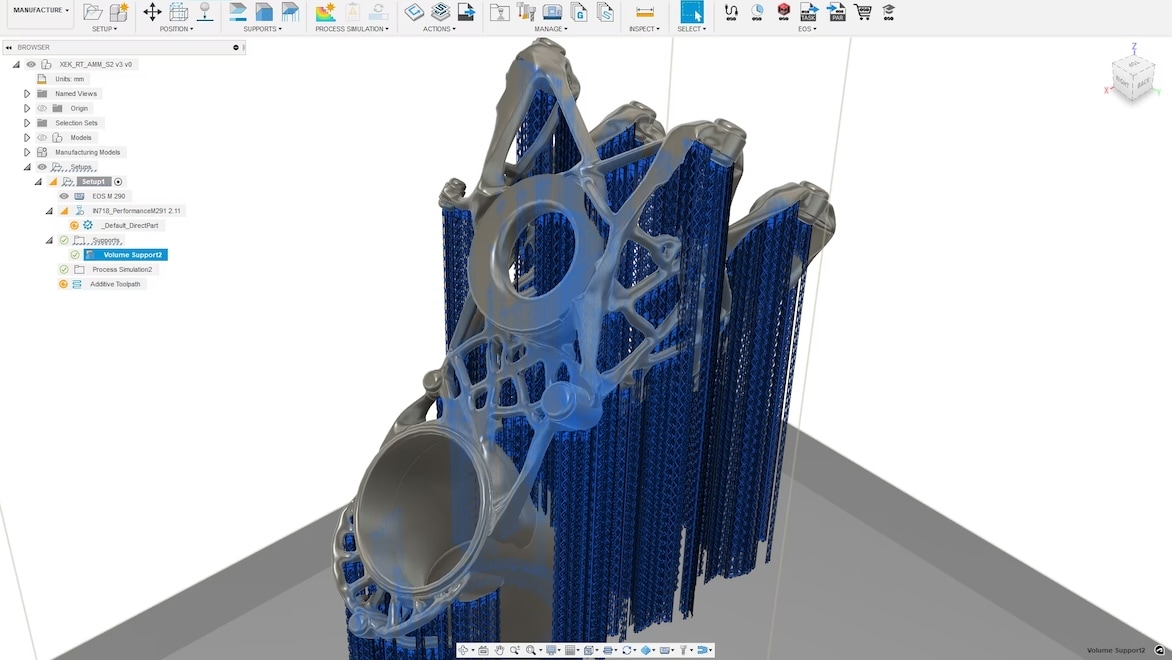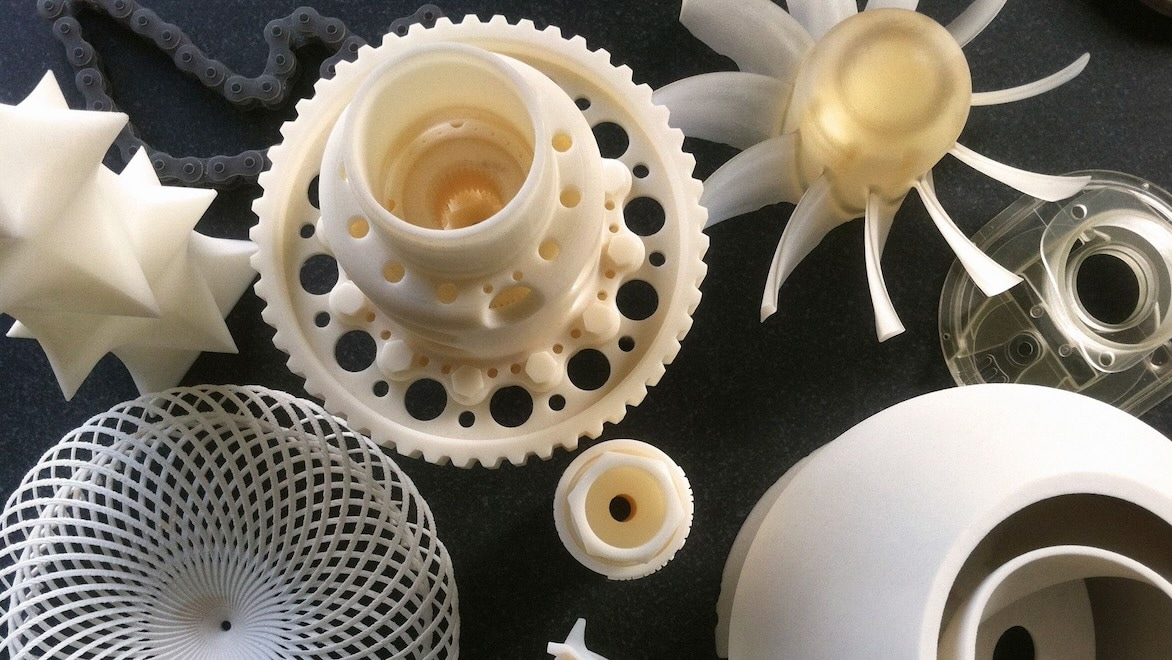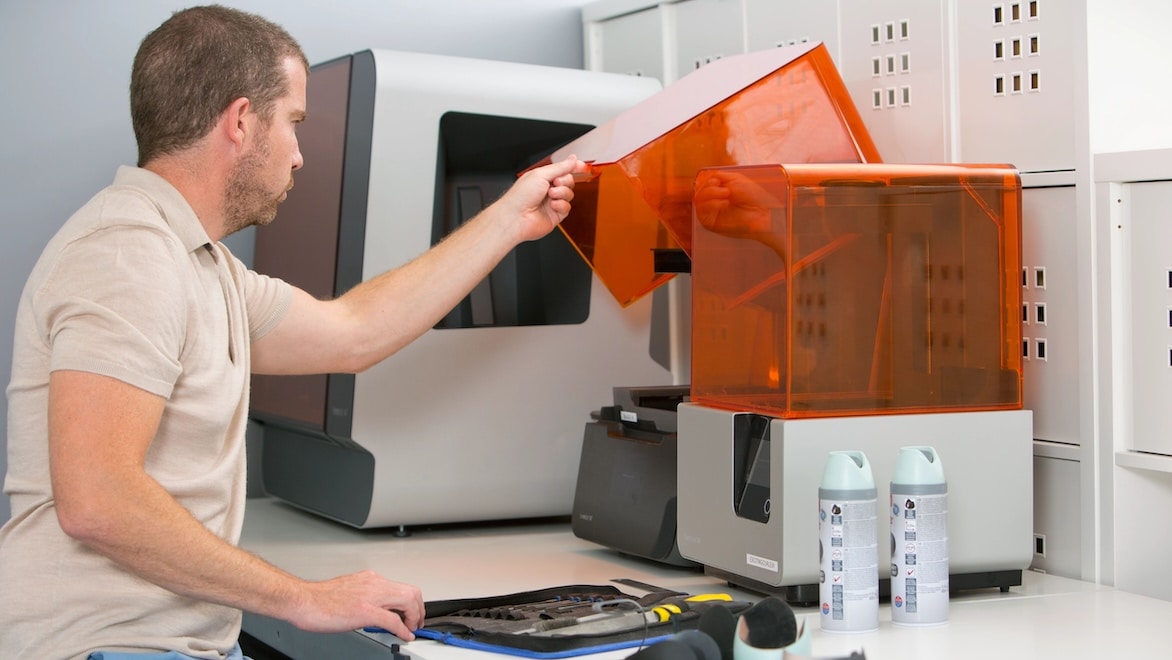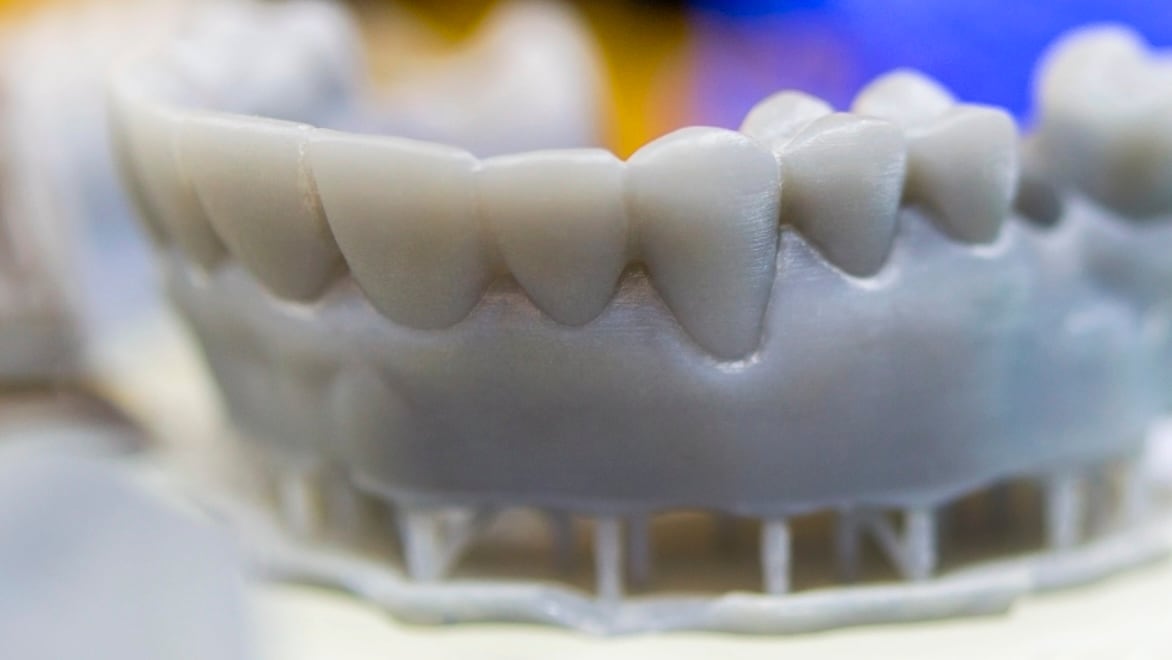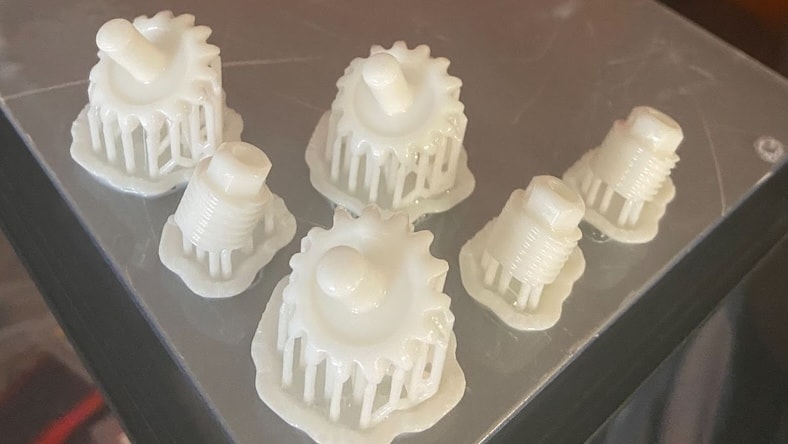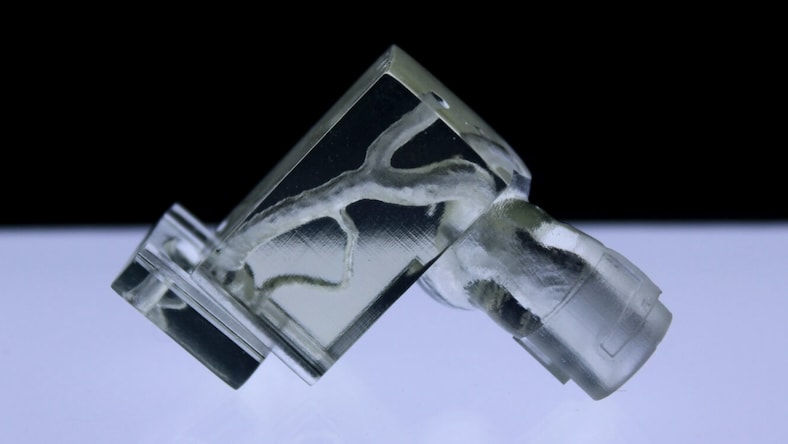& Construction

Integrated BIM tools, including Revit, AutoCAD, and Civil 3D
& Manufacturing

Professional CAD/CAM tools built on Inventor and AutoCAD
Stereolithography, or SLA, is an additive manufacturing process that converts a liquid resin into a solid, plastic- or rubber-like polymer in an SLA 3D printer. It is a type of 3D printing that is popular for the creation of prototypes, medical models, and computer hardware.
Stereolithography (SLA) was invented in the early 1980s and entered the public consciousness as consumer and prosumer desktop 3D printing became popular in the early 2010s.
The SLA 3D printer process uses a liquid resin that cures or solidifies when a laser of UV light is applied to the resin. This type of material, a thermoset, undergoes a chemical reaction when exposed to either heat or UV light, hardening (curing) the liquid resin into a solid. Resins can come in assorted colors and include various material properties to suit your needs. The liquid resin is loaded into bottles that can then be added to the tank of the stereolithographic 3D printer. Once loaded, the printer can utilize the various colored resins to print.
As the SLA 3D printer applies liquid resin to an existing layer of the structure, the device shines a beam of UV light from a projector or laser to form the next thin layer. The resin’s chemical properties react to specific wavelengths emitted by the light, which causes the resin’s monomers and oligomers to join in chains, forming polymers (the basis of plastic) and hardening the material on the build surface layer.
Depending on the type of resin used, the final product’s physical properties can vary to suit the part’s end use better. These variations can include color, flexibility, durability, and weight.
There are a number of different types of resin used in stereolithography (SLA), including:
These are cost-effective and offer high stiffness at high resolution. They are often used for rapid prototyping and for artistic purposes.
Engineering resins for stereolithography are known for their suitability for machine parts and come in a number of different subtypes, including tough resins for high-stress applications, heat-resistant resins for printing parts to be used in high-temperature environments, and flexible resins for when parts are required to bend or flex.
Medical and dental resins are designed to be suitable to be used in operating theatres and in contact with the human body for extended periods of time.
To create anything using stereolithography, special 3D printing software is required that facilitates the digital design of your part or model before it is brought to life using UV light and resin. One of the most popular stereolithography software solutions is Autodesk Fusion, CAD/CAM software offering a comprehensive design environment that links straight into the manufacturing process. Autodesk has also teamed up with 3D printer manufacturer Formlabs to ensure a smooth workflow from design to print.
The stereolithography process differs from other popular 3D-printing methods in several ways.
Fused deposition modeling (FDM) uses a thread or filament of thermoplastic in solid form, melting and extruding it onto the 3D model.
Selective laser sintering (SLS) also uses polymers, but the material is a powder. The 3D printer aims a laser at the powder, melting the polymer and fusing it into a solid form for the final structure.
FDM is most widely used in the prosumer/consumer and small-manufacturing markets alongside stereolithography. In contrast, SLS is more suited to heavy industry.
Among each type, stereolithographic printing produces the smoothest, highest-resolution surface with material that’s watertight and reasonably shock absorbent in its final state. These properties make it the most popular method among home users and hobbyists. The number of desk toys and trinkets produced in the early home 3D-printing movement are good examples of stereolithography’s utility.
The chemical properties of stereolithography resins also make them popular in aesthetic and artistic fields, like jewelry and accessories. In addition, SLA is also widely used for making biomedical devices because of the resins’ nonabrasive finish.
Some 3D-printing methods produce rough builds and require postproduction processing to improve the surface finish. Therefore, those methods are often only used for size or dimensional testing. Stereolithography, however, lets manufacturers build finer finishes into their complex geometry print designs, minimizing post-processing steps.
Other 3D-printing methods produce variations in their layers that result in rough or rutted surfaces, but stereolithography has isotropy, or uniformity, between its layers due to how new layers bond to the cured layers. This uniformity results in minimal variation between layers, making SLA one of the few single-state additive production processes, resulting in less post-manufacture cleaning or polishing.
SLA 3D printers can use multiple resin tanks, which means manufacturers can print objects with different colors or slightly different materials in one pass. This can create a product that is immediately ready for use or print areas of varying flexibility in a single structure.
The stereolithography process is particularly well-suited to prototyping because it allows for quick production of single parts. SLA prototypes also offer a high level of accuracy without the need for expensive tooling. Building prototypes in this way can reduce time to market and encourage creativity and experimentation during the design process. Coupled with versatile design software like Autodesk Fusion, stereolithography can reinvigorate your prototyping processes.
Many different industries utilize stereolithography 3D printing for a large range of practical applications. In the health care sector, it has been used to create medical devices tailored to the specific needs of the patient, such as orthotics and prosthetics. The automotive industry has leveraged SLA 3D printing for rapid prototyping and customized parts. Similarly, aerospace manufacturers trust it to create cost-effective, safe, and reliable parts. Stereolithography has also revolutionized the jewelry industry, allowing for the design and production of highly intricate and personalized pieces.
Unlock additional capabilities for 3 to 5-axis CNC machining, sheet-based nesting and fabrication, and metals-based additive manufacturing.
PRINTCITY
Using Autodesk Fusion and a fleet of printers offering SLA, FDM, and metal printing technologies, this additive manufacturing and digital manufacturing facility in Manchester, UK, guides clients through rapid prototyping and feasibility testing.
DR. HANNES SCHWENKE
A German neurosurgeon and his team have improved their outcomes for brain aneurysm surgery by using stereolithographic 3D-printed models of the patient’s arteries—created with Fusion and Formlabs—to visualize, analyze, and test their surgical plans.
COSM MEDICAL
To help address the often-stigmatized women’s health issue of pelvic floor disorders, this medical device company is creating customized intravaginal prosthetics using ultrasound technologies, AI, Autodesk Fusion, and Formlabs SLA printers.
Autodesk digital design workflows integrate seamlessly with Formlabs’ technology to ease the journey into the world of additive manufacturing.
This Autodesk University session shows how 3D printing is revolutionizing entertainment, with filmmakers, prop shops, and production designers using it to rapidly prototype props and create production-quality versions.
Fusion users can already enable 3D printing of a digital design, and this tutorial explains how to export a Fusion file to an STL/mesh file, the format used on a 3D printing device.
This blog post explains the different processes, materials, tools, and applications for additive manufacturing technologies.
Stereolithography (SLA) is a form of 3D printing. It’s the photochemical process in which a beam of UV light selectively cures an area of liquid resin, hardening it into polymers. In the modern additive manufacturing era, stereolithography describes both the 3D printing process and the device that uses it.
Stereolithography is used to create 3D-printed objects in smaller consumer or prosumer 3D-printing devices, usually with polymer (plastic). A laser or projector generates a beam of light that is aimed at an area of thermoplastic resin, curing it into a harder, polymer-based form. This makes it uniquely suited to creating small, unique objects made of polymers (rubber or plastic).
SLA is used interchangeably with stereolithography, which is the method of shining a focused beam of light on a thermoplastic resin to cure it to a state of hardness.
Although SLS (selective laser sintering), another additive manufacturing technology, builds material up one layer at a time like stereolithography/SLA, the raw material in SLS comes in the form of a powdered polymer. A high-powered laser then fuses powder particles together on the print surface, gradually building up the structure.
SLA/stereolithography resin comes in a tank or bottle in liquid form. PLA, or polylactic acid, is a raw 3D-printing material that comes in a spool of solid plastic thread or filament.
The outcomes from SLA resin can be brittle compared to PLA, which is often slightly softer and more flexible. It’s stronger per unit of mass than SLA resin but is not suited to complex or detailed designs.
While researching the various process methods and materials to be used for your parts, review the material data sheets to understand whether that material can work for your intended use. Additional in-house testing may also be needed to confirm the manufacturing method works as needed.
